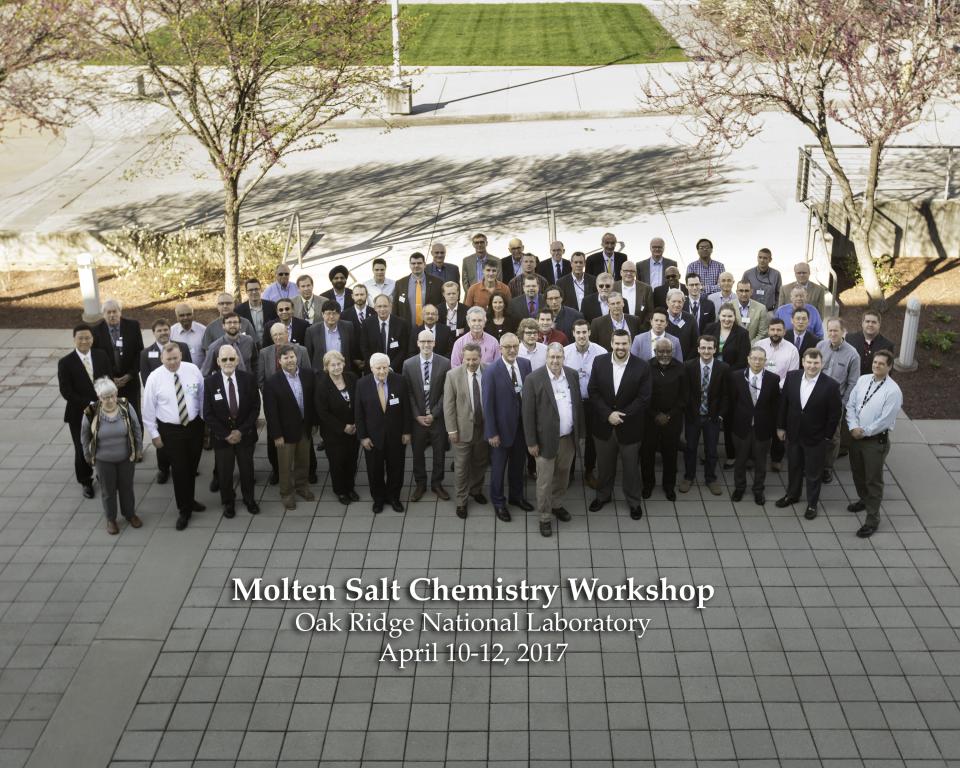Molten Salt Chemistry Workshop | Molten Salt Reactor

Molten Salt Chemistry Workshop
At the dawn of this century, nuclear experts in the Generation IV International Forum recognized the unique capabilities of molten salts in one of six next-generation reactor designs. Since that time, various national research and development programs, most notably in China, have focused resources on developing molten salt reactors (MSRs) of various designs. In the past decade in the United States, new designs and applications have matured to the point that a number of companies have dedicated resources, enthusiasm, and new approaches to MSR technology development. The US Department of Energy (DOE) and its national laboratories have supported this evolution by working with multiple companies and universities; this relationship matured in 2015 with the creation of the Gateway for Acceleration of Innovation in Nuclear (GAIN) initiative working in concert with the US Industry MSR Technical Working Group.
In response to the sustained resurgence of the MSR concept, the DOE Office of Nuclear Energy organized the Molten Salt Chemistry Workshop at Oak Ridge National Laboratory on April 10–12, 2017, for the purpose of identifying innovative science-based, technology driven approaches to accelerate MSR development and deployment. In the United States and across the world, the MSR concept is recognized as one of the few game-changing technologies that can overcome existing barriers to the adoption of commercial nuclear power. Not only is the generation of electricity within a once-through uranium fuel cycle foreseen; in addition, proponents of MSR technology envision completely new opportunities to rationalize fuel cycles by securely using a variety of fissile and fertile resources to supply high-temperature, low-pressure industrial heat and to create a cost-competitive, safe, and more sustainable commercial nuclear option.
This workshop was rooted in a multidisciplinary dialogue among a wide range of experts spanning chemistry, materials science, nuclear science, and engineering from academia, national laboratories, the US government, and commercial organizations. There was strong participation from the US Industry Technical Working Group, as well as participation from small and large companies with specific interests and expertise in molten salt technology. Since MSR technology has a chemical focus and chemical challenges, the participants were focused toward the chemical sciences—but a very strong contingent of materials, computational, and nuclear scientists/engineers also participated. These experts were organized into five working groups: (1) physical chemistry and salt properties, (2) analytical chemistry, (3) molten salt fission product chemistry and solid-state radiolysis, (4) materials compatibility, and (5) computational science and material science. The Introduction section of this document and the appendices provide details on how the workshop was conducted and who participated.
Fourteen R&D topics identified during the workshop were integrated into six Future Research Directions (FRDs) after the workshop. The input for and definition of each FRD contained contributions from multiple working groups and represent a collective effort from the workshop participants.

